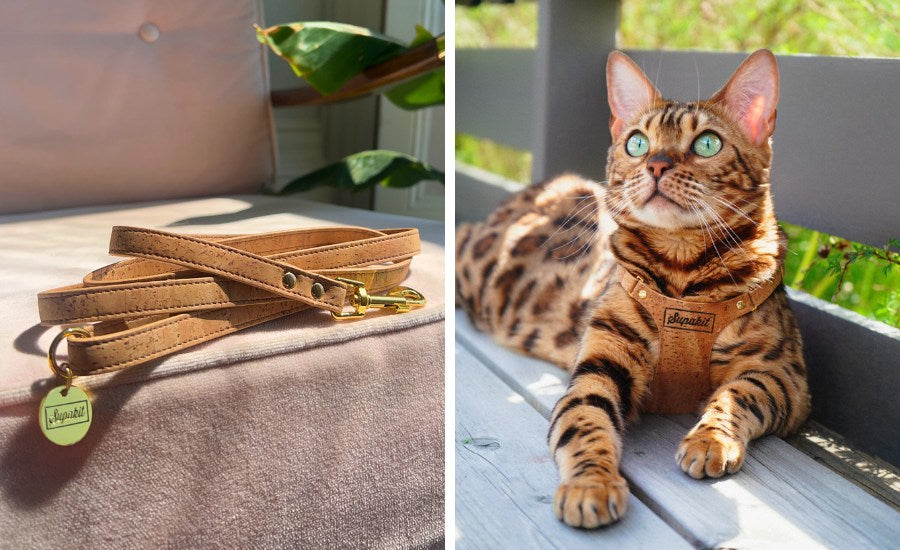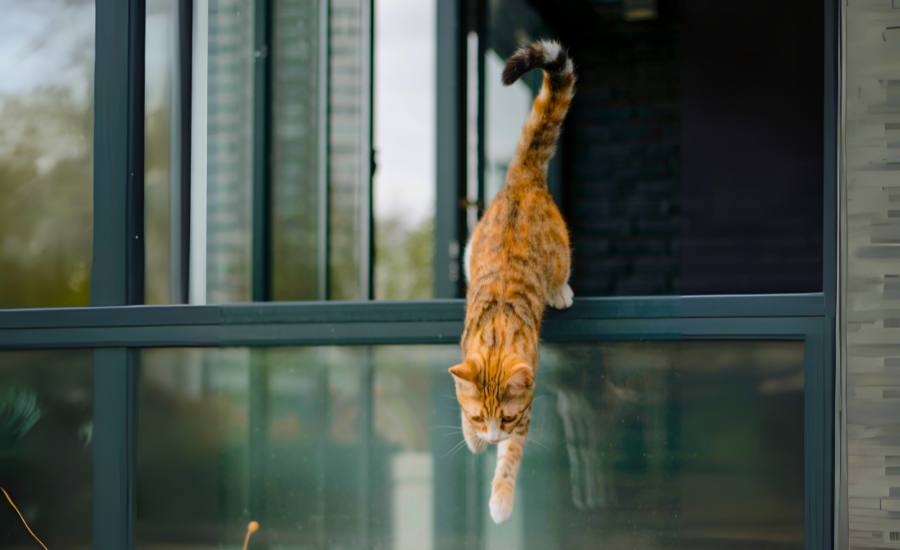How to Use Catnip, Silver Vine And Other Cat Herbals To Make Your Cat A Happy Cat
It’s widely known that some cats go crazy for catnip. Some will roll around on the floor, wriggling with ecstacy, while others will become cool cats, chilled and relaxed. Some cats have even been known to become aggressive, while around a third of cats will show reaction at all!
Fun as all this may seem, the ‘high’ is usually all over in 15 minutes and it can take a few hours or more for a cat to react again. Given repeated exposure the effects will reduce over time and your cat will eventually stop getting a buzz completely.
But did you know that catnip and other cat herbals have so much more to offer than just a quick ‘high’? They can be used to help your cat overcome anxiety, stressful situations and enhance their long-term sense of well-being. In this article we’ll show you how to use catnip and other herbals to do exactly that!
By the way, don’t worry if your cat is one of the third of cats who aren’t fussed about catnip, you’ll find a host of natural alternatives at the end of the article that offer many of the same effects. The chances are good that you’ll be able to find one of them that will work for you and your kitty!
What is catnip?
A member of the mint family and widely grown across the world, catnip (aka Nepeta cataria, catmint or catwort) can be used either straight from the garden, bought as dried leaves or as liquid that contains Nepetalactone, catnip’s active ingredient. It is this essential oil that temporarily causes kitty to go wild and can either be sniffed or eaten with varying effects.

What are the effects of catnip?
The effects of catnip generally depend on how your cat is exposed to it.
Sniffing the leaves or oil usually brings on the hyper-active effects that you may be most familiar with. You may notice your cat writhing, rolling around, and hugging the bag or toy that holds the catnip. Depending on your cat’s character this can lead to over-stimulation, and occasionally clawing and biting.
Eating catnip, either directly or mixed with food usually brings on a more calming effect. When mixed with food, you’ll often notice that catnip can have an almost opposite effect on your cat. Instead of the ‘crazies’ they’ll experience catnip’s wonderful calming effects, and may appear blissed out and more easy going than usual.
How to use catnip and other cat herbals
Introducing a new ‘thing’ to your cats world
Cats love their ‘things’, but they don’t always love the things you’d like them to love!!
Like that deluxe new scratching post that they refuse to use or that beautiful new cat bed that cost an arm and a leg! Try sprinkling just a little of that feline fun dust on their new ‘things’ to encourage your kitty to warm to their new crib, or pique their interest in their new scratching post.
Traveling into uncharted territories
Cats love to explore, but moving out of their known territory can be super stressful and sometimes over-stimulating. Take traveling for instance, they’ll let you know every inch of the way if they aren’t sure about this new moving home, be it a car, a campervan or a back-pack. Using one of the cat herbals that has a more relaxing effect on your cat can really help keep the calm when there is a kitty-on-board. Catnip added to food often relieves anxiety, as do some of the others (see the end of this article for more info on catnip alternatives). Or alternatively, getting all that energy out in a mad 15 minutes of Silvervine crazies can leave furball a blissed out and rather snoozy little traveler for the following hour or two.

Let’s get this party started! (Or Fur-ever Furiends…. Maybe!)
Introducing a new cat to the family can be daunting, especially if one cat is a little less forthcoming. So, get the party started with a few herbal treats. This is by no means a guarantee, inter-kitty relations can be a minefield, but it has been known to work. Even the shyest cats can be tempted to loosen up, and it can be a great distraction if everyone is too busy having fun to think about letting the fur fly!
Related post: 'How To Introduce Cats'

Rewarding good behaviour
Giving a treat as part of your training program is essential and if one of these organic wonders gets a good response then why not try using it for positive reinforcement. Maybe just a quick sniff of a toy rather than a full-on catnip session, but a little of what they like to encourage a good behaviour is never a bad thing.

Moving into a new home
There’s nothing like a housewarming party to really feel like you’ve arrived and why not extend that to the felines in your family. Breaking out a bag of botanicals when everyone is feeling a bit edgy in their new lair can work wonders. It’s also great for encouraging play in new rooms that hold trepidation for less inquisitive cats.
Related post: 'Moving House With A Cat: How To Have A Cat-Friendly Move'
Natural alternatives to catnip
But what to do if your fluff ball is one of the unfortunate 1 in 3 cats that get no kick from catnip? Well, there are alternatives, still natural and with many of the same effects. So, if nip gives your kitty no thrill at all, try giving these these herbals a whirl….
Silver Vine
Also known as Matatab, Silver Vinei is a species of Kiwi fruit which grows in high altitude areas of Japan and China and is a favorite cat treat in Asia. It can be made from various parts of the plant with preparations made from the dried fruit galls being most potent. Cats are said to react even more strongly to silvervine than catnip and it is effective in 80% of cats.
Valerian Root
A flowering plant that grows in Europe and Asia which has been used in medicine since ancient Greek and Roman times. It has a strong odor and is said to mimic catnip in 50% of cats with a similar burst of euphoria, but can be followed by a sedative state and possibly sleep. As with catnip it can be used inside a toy or bag or given directly. It can be used to reduce anxiety in both cats and humans, so be careful to only use Valerian Root that is made for use with cats, as the human products could be too strong!
Tatarian Honeysuckle
The only variety of Honeysuckle known to induce an effect in cats, the wood of the Tatarian Honeysuckle again gives a ‘high’ similar to catnip in around half of domestic cats.
It can be used as a solid piece of wood that can be chewed, licked and sniffed or as wood shavings or dust inside a toy.









